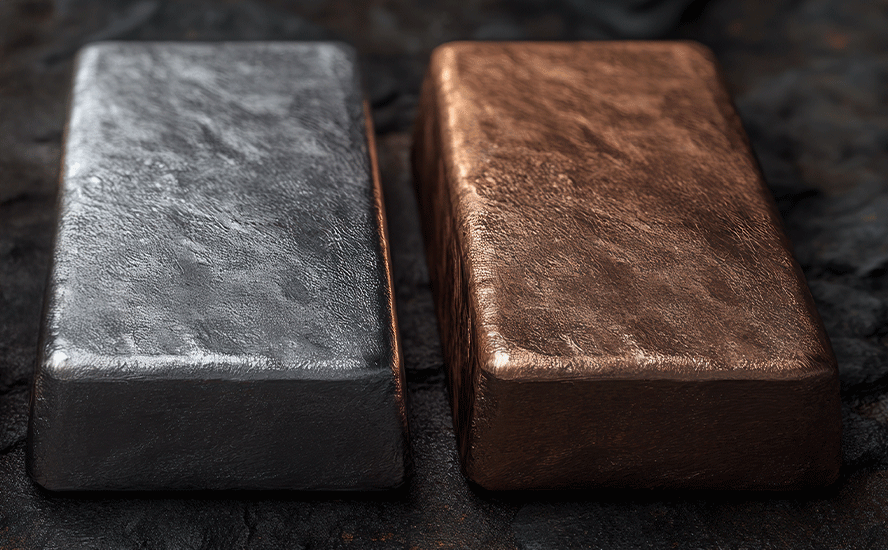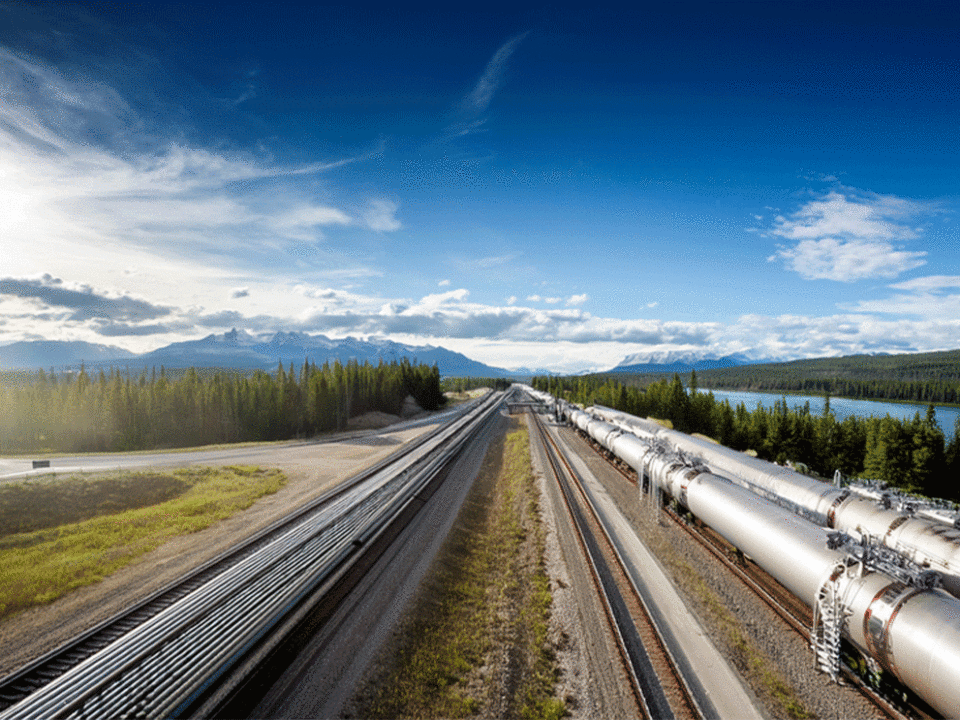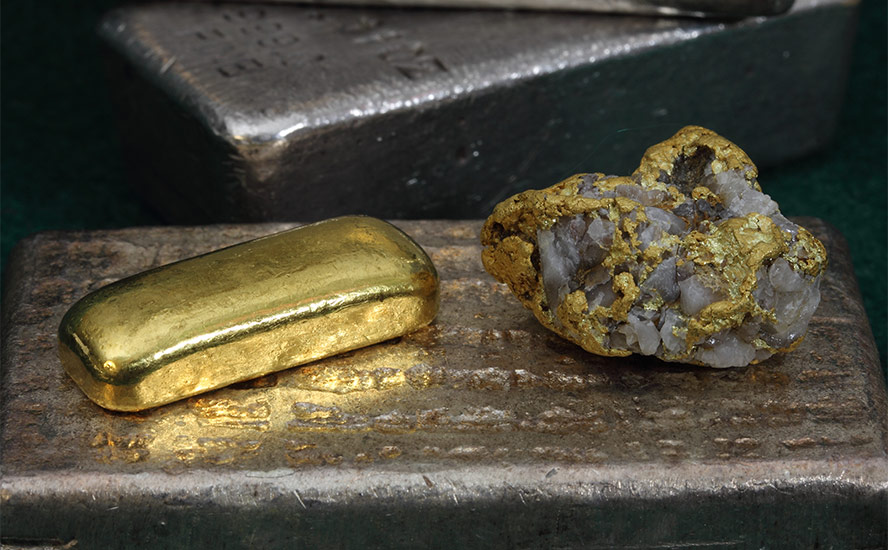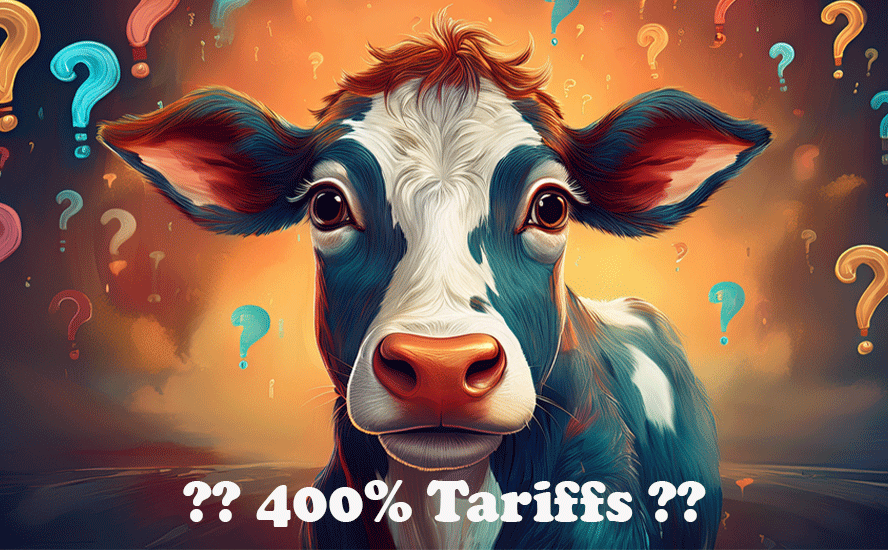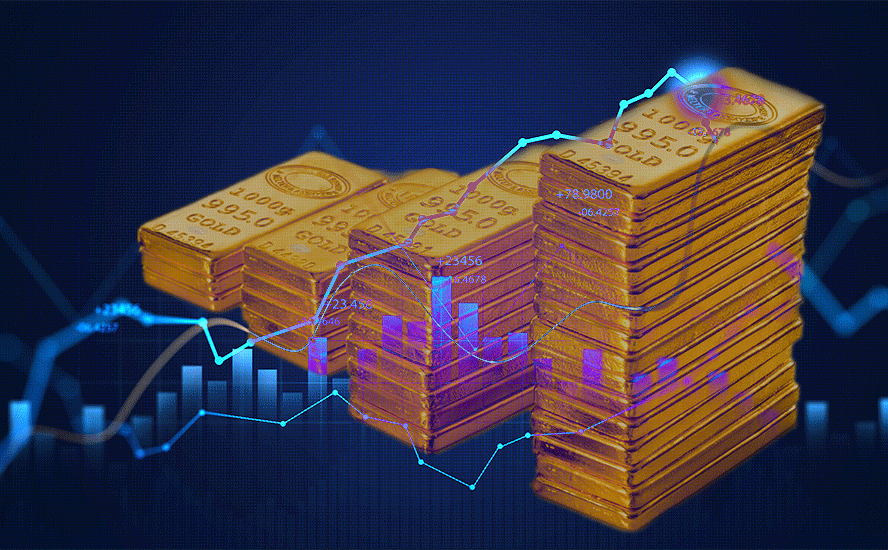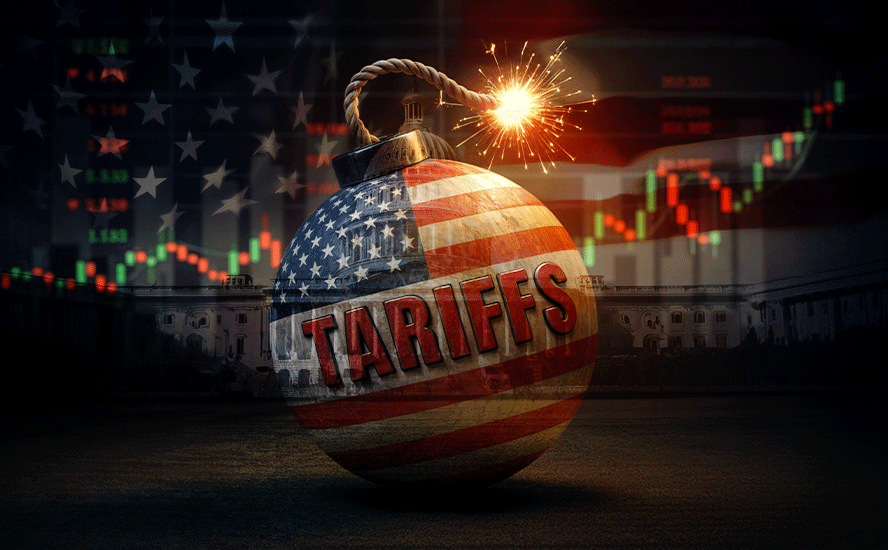The case for green economy metals and the companies exploring for them
2021.04.27
The United States is back in the fold of countries pledging to reduce greenhouse gas emissions, and that is helping to drive demand for an assemblage of metals that a global push to decarbonize and electrify is expected to require.
The new “green economy” rejects dirty sources of energy and transportation, namely coal, oil, and natural gas. Instead, it relies on carbon-friendly modes of transport and energy production, including electric vehicles, renewable power, and energy storage, as well as mobile technology (5G) and rapid adoption of artificial intelligence (AI) technologies needing increased computing power.
Transportation makes up 29% of global emissions, so transitioning from gas-powered cars and trucks to plug-in vehicles, as well as high-speed rail, is an important part of the plan to wean ourselves off fossil fuels.

However, to accomplish all of the above will require a colossal boost in the production of mined materials, including copper, silver, zinc, nickel, tin, lithium and palladium.
Biden goes green
Cleaning up the planet will not be possible without major reductions in carbon emissions from the two largest economies, the US and China.
President Biden is clearly pushing forward on climate-oriented programs that distance himself from his predecessor and are a nod to the Democratic left that supported his bid for president.
Pro-environment actions so far include re-joining the Paris climate agreement; canceling the Keystone XL pipeline from Alberta to US Gulf Coast refineries; the American Jobs Plan which contains a number of measures that support clean energy and electric vehicles; and most recently, Biden’s commitment to the Leaders Climate Summit: cutting in half US emissions below 2005 levels by 2030.
(in 2019, the latest year data is available, GHG emissions were 13% below 2005 levels according to the US EPA. Emissions last year are expected to be down 21% due to the pandemic but this year they are expected to rise as the economy recovers)
Biden’s $2.3 trillion jobs plan currently before Congress, also known as the infrastructure spending package, is aimed at transitioning the US transportation system to battery-powered vehicles and supporting renewable wind and solar energies over carbon-based sources like coal and natural gas.
Out of $621 billion allocated to transportation infrastructure, $174B will be made available for helping companies to make electric vehicles, and to build 500,000 charging stations across the country. Biden’s proposal also calls for shifting the federal fleet, including the Postal Service, to fully electric vehicles, and mandating that federal buildings only use clean energy sources.
A new “clean electricity standard” would force utilities to wean themselves entirely from carbon-emitting sources by 2035.
The plan also calls for $100 billion to improve the electrical grid system, including construction of higher voltage transmission lines, made up of copper or aluminum.
Biden was a key architect of Obama’s 2009 American Recovery and Re-Investment Act, which provided $90 billion for clean energy. Much of that funding was squandered, however, so Biden is highly motivated to try again. He sees a major infrastructure spending bill as necessary to keep up with China, which has been outspending America on keeping its roads, bridges, dams, public buildings, etc. modernized and safe.
Electric China
China is also moving forward rapidly on its plans to electrify and decarbonize. The country is the world leader in electric vehicles and battery production.
President Xi Jinping last fall announced the country is aiming for carbon neutrality by 2060. (carbon neutral means emitting the same amount of carbon dioxide into the atmosphere as is offset by other means)
With China being the world’s biggest source of carbon dioxide, responsible for around 28% of global emissions, Xi’s pledge was a significant step in fighting global climate change.
However, meeting its carbon-neutral goal and replacing fossil fuels will mean a 75% increase in electricity demand, and equates to a $6.4 trillion investment in new power generation capacity, according to a report from Wood Mackenzie quoted by South China Morning Post.
Growth will primarily come from solar, wind and energy storage, all of which will require copious metals.
Leveling the playing field
Getting the raw materials to fuel its ever-expanding economy has been a real challenge for China over the past couple of decades. Despite its size, the country has relatively few minerals, meaning that to control its economic destiny, it must import them.
While iron ore and copper were the hot targets of overseas acquisitions by Chinese firms when the economy was growing at double digits, more recently they have targeted lithium, cobalt, graphite, copper, and rare earths — metals that are used in electric vehicles.
EVs need a lot of copper, four times as much as a regular vehicle, and China hasn’t been shy about boosting its copper reserves to meet expected demand.
Two large Peruvian copper mines are owned by Chinese companies. Chinese state-run Chinalco owns the Toromocho copper mine, while the La Bambas mine is a joint venture between operator MMG (62.5%), a subsidiary of Guoxin International Investment Co. Ltd (22.5%) and CITIC Metal Co. Ltd (15%). The Chinese-backed Mirador mine in Ecuador opened in 2019.
Another major Chinese copper buy happened in 2016, when Freeport McMoran agreed to sell its majority stake in the DRC’s Tenke copper project, to China Molybdenum (CMOC) for $2.65 billion — “reducing the US copper miner’s debt but handing the Chinese company one of the world’s prized copper assets,” as Reuters states.
Most of the metal produced under these off-take agreements will never come to the market anyplace other than in China. Those metals that do, can have their supply shut down any time the Chinese want.
The Made in China 2025 initiative, which aims to make China’s copper industry more efficient, is expected to grow Chinese copper demand by an additional 232,000 tonnes by 2025. This isn’t counting the need for more copper for railways, electric vehicles, car motors and power transformers.
China’s Belt and Road Initiative (BRI) is a $900 billion program to open channels between China and its neighbors, mostly through infrastructure investments.
China long ago put a lock on much of Africa’s vast resources.
The world’s largest consumer of commodities already has a monopoly on rare earths mining/ processing, produces the most lithium and cobalt, and dominates the graphite market.
Beijing also appears to be locking up nickel supply, through investments in the leading producer, Indonesia. China is working with Indonesia to develop nickel for electric vehicle batteries. Chinese-led, of course. Because China doesn’t really care about helping Indonesia to become an EV battery hub. Its real goal is to establish a nickel-processing beachhead in the world’s top nickel mining country, using Chinese technology to process class 2 nickel laterite deposits into class 1 battery-grade metal. Then sell its nickel chemicals to battery companies either in China or Belt and Road countries, as it continues its path to complete global metals domination.
With so much of the world’s metals supply controlled by China, where will the rest of the world go to find the minerals needed to grow their green economies?
A recent article in the Northern Miner notes that China’s control over the raw materials needed for the green economy has become a critical vulnerability for the West’s emerging “Industry 4.0” supply chains.
The author, Anthony Milewski of Nickel 28 Capital, points out that the modern world’s dependence on China was “soundly demonstrated” when during the pandemic in 2020, automakers had to slow down or halt production due to a shortage of electronic chips sourced from China.
He also observes that, unlike China, Western governments do not get involved with mining and processing minerals, meaning that only projects that offer a decent return to shareholders will enter production.
The Chinese by contrast are not only looking at financial return, but at the value of the products that need the commodity. (for example, they are factoring in the huge economic advantage that comes with Western reliance on Chinese nickel and the end-products that require it.)
Neither do Chinese companies care that much about carbon intensity, since they don’t, and likely never will, face a carbon tax. This puts Western firms at a competitive disadvantage. Milewski says the answer is to tax carbon at its source:
Until Western governments put in place some sort of tariff system tied to carbon footprint, regardless of origin, China will continue to play the long game — advancing projects in developing countries and achieving increasing dominance with key materials and supply chains.
Industrial comeback
The demand for “green” metals is pinned on bets that more aggressive climate pledges will accelerate the proliferation of solar panels, wind turbines and electric cars. Beyond electrification and decarbonization, the need is being driven by something more immediate — a worldwide economic recovery from the pandemic.
As countries continue to vaccinate swaths of their populations, and infections drop due to lockdowns, travel restrictions and social distancing, economies are slowly re-opening, stoking demand for more cars, electronics, and infrastructure, primarily.
In the US, unemployment insurance applications have sunk to a new pandemic low, while in China, key indicators for consumer and industrial activity are rising.
The prices of industrial metals are enjoying a spectacular run, especially given that fears are being raised about shortages. (something we at AOTH have been talking about for years)
As the chart below shows, copper, silver, zinc, lead, nickel, aluminum, and palladium have all seen substantial gains over the past year.

On Monday copper prices soared to their highest in a decade, with May futures reaching $4.44/lb on the Comex in New York; iron ore and steel prices are also up substantially.


“The outlook for copper has never been better,” Bloomberg quotes Richard Adkerson, CEO of US-based Freeport-McMoRan. Supporting this view, the publication states, are scarce stockpiles, strong demand, and a dearth of new copper projects.
On April 21 palladium hit all-time high of $2,792/oz, besting gold by $995.40. The platinum group metal used in gas-powered catalytic converters is set for a supply squeeze for the 10th straight year. Driving palladium demand are higher sales of gasoline vs diesel units and tighter pollution controls. Palladium use in hybrid vehicles, seen as a bridge between gas-powered cars and pure electrics, is also a growing source of demand. Supply, meanwhile, is being challenged by production disruptions, for example flooding at Arctic mines.

In fact, battery/ energy metals demand is moving at such a break-neck speed, that supply will be extremely challenged to keep up. Without a major push by producers and junior miners to find and develop new mineral deposits, glaring supply deficits are going to beset the industry for some time.
According to a recent report by UBS, a deficit in nickel will come into play this year, for rare earths in 2022, for cobalt in 2023, and in 2024, for lithium and natural graphite.
Moreover, the Swiss investment bank predicts large deficits by 2030 for each of these metals: 170,000 tonnes for cobalt, equal to 42% of the cobalt market; 10.9 million tonnes of copper (about half of current global mined production), representing 31% of the market; 2.1Mt for lithium (50% market share); 3.7Mt for natural graphite and 2.2Mt for nickel (both 37%); and 48,000 tonnes for rare earths, equivalent to 47% of the market.
The bullish market forces that are swirling in preparation for what many are calling the next commodities super-cycle, are excellent news for companies on the hunt for minerals that support the electrification of the transportation system, the decarbonization of energy sources, and new spending on infrastructure, both green and traditional/ blacktop.
The following, in alphabetical order, are AOTH’s top juniors in the energy and battery metals space.
Cypress Development Corp
Cypress Development’s (TSX.V:CYP, OTC:CYDVF) Clayton Valley lithium deposit would be mined from neither brine nor hard rock, but claystone. An average production rate of 15,000 tonnes per day to produce 27,400 tonnes LCE annually over a +40-year mine life means the project stacks up extremely well against any of the 10 deposits listed here. The company, in our opinion, is extremely undervalued, having already completed a preliminary economic assessment (PEA) and prefeasibility study.
In January of this year Cypress said progress has been made in a scoping-level study of chloride-based leaching to recover lithium from claystone; and in March, began developing a pilot plant that would initially process one tonne per day.
In Q1, Cypress also announced that a previous C$8.5 million bought deal financing was doubled to $17 million due to strong demand from investors.
Graphite One
Located on the Seward Peninsula in western Alaska, Graphite One’s (TSX.V:GPH, OTCQB:GPHOF) Graphite Creek property hosts America’s highest-grade large flake deposit. A preliminary economic assessment (PEA) released in 2017 showed 81 million tonnes of resources, mostly in the inferred category at a grade of 7% Cg, containing about 5.7 million tonnes of graphite. The same study envisioned a long-life (40 years) operation — based on drilling less than 20% of the deposit — with a mineral processing plant capable of producing 60,000 tonnes of graphite concentrate (at 95% Cg) per year once full production begins in the sixth year. Tests carried out on the property found that 75% of the flake graphite could be converted into spherical graphite, which is the form used in EV batteries.
Looking to advance what would be an integral part of the US graphite supply chain, Graphite One in February announced the completion of two non-brokered private placement offerings, raising gross proceeds totaling C$10 million. Proceeds will be used to further develop Graphite Creek, including a prefeasibility study projected for completion by the end of Q2 2021.
Max Resource Corp.
Max Resource’s (TSX.V:MXR, Frankfurt:M1D2, OTC:MXROF) CESAR property is in northeastern Colombia along the world-famous Andean Copper Belt, where silver is also abundant. It lies on a massive sedimentary system covering a cumulative 220-km strike of highly prospective Cu-Ag mineralization. Max is the first company to explore all of the copper and silver-rich areas covered by the CESAR property. The junior already has multiple non-disclosure agreements in place to advance the project, including a collaboration agreement with an industry-leading copper producer.
Exploration thus far has identified multiple copper-silver target zones (CESAR North, CESAR South, and CESAR West) hosting significant discoveries with potential to expand further.
Equally compelling about the CESAR project is that it bears a striking resemblance in terms of grade, scale, and mineralogy to the world-class Kupferschiefer deposits found in Poland, which are the largest source of copper in Europe and the world’s #1 silver producer, with yields almost twice the production of the next largest silver mine.
Following the discovery of the CONEJO copper project on the northern target of CESAR last month, the company has now found a second copper project named “URU” 30 kilometers south of the CONEJO.
Norden Crown Metals
Norden Crown (TSXV:NOCR, OTC:NOCRF, Frankfurt:03E). Recently Norden Crown started drilling at Fredriksson Gruva, a past producing mine originally discovered in 1976. Based on historical drilling data and 3D modeling, the company projected that the mineralization does not end below historical mine workings, and instead continues, as suggested by regional drilling done by past explorers looking for iron deposits. The evidence so far is proving this theory correct.
Having completed the first three drill holes, the company has successfully shown not only that the mineralization continues at depth, but that it has qualities consistent with a Broken Hill Type (BHT) deposit. BHT silver-zinc-lead deposits constitute some of the largest and highest-grade ore deposits in the world. The findings from the first three holes confirmed that Norden Crown is into a Broken Hill-type deposit such as those found in Australia, South Africa and parts of the Bergslagen mining district of southern Sweden where Gumsberg is located. Reported grades from mined ore are remarkably consistent, and past drilling rarely missed mineralization, which CEO Patricio Varas says is very encouraging for further resource expansion.
A $4 million financing at C$0.10 per unit was announced on April 22.
Palladium One Mining
Palladium One (TSX.V:PDM, Frankfurt:7N11, OTC:NKORF) is a platinum group element (PGE) nickel-copper exploration/ development company. Its assets consist of the Läntinen Koillismaa (LK) PGE-nickel-copper project in north-central Finland and the Tyko nickel-copper-PGE property near Marathon, Ontario.
Tyko’s ore contains twice as much nickel as copper, and equal amounts of platinum and palladium. On Jan. 5 PDM announced assay results from the first two holes of a maiden drill program at the Smoke Lake target, completed last year. “Smoke Lake continues to deliver extraordinarily high-grade intercepts. The highest to date being 9.9% Ni_Eq over 3.8 meters, within a broader intercept of 6.1% Ni_Eq over 7.5 meters! An extremely high-value, near surface resource appears within our grasp at Smoke Lake,” says Derrick Weyrauch, Palladium One’s President and CEO. A second-phase, 2,000m drill program started earlier this month, following up on high-grade hits of 9.9% nickel equivalent (Ni_Eq) over 3.8m and 6.3% Ni_Eq over 0.9m, published on Jan. 19.
At Palladium One’s other active project, Läntinen Koillismaa (LK) in north-central Finland, recent phase 2 drilling at the Murtolampi Zone intersected high-grade mineralization of 13m at 3.4 g/t palladium equivalent (Pd_Eq) within 79m at 2.0 g/t Pd_Eq (hole LK20-026), the best grade drilled in the area. Over at the Kaukua South target, drilling returned grades of 47m @ 2.6 g/t Pd_Eq, including a higher-grade core of 12m @ 4.2 g/t Pd_Eq. IP surveys have begun to expand the strike length by up to 3 km, from the current 4 km.
The property is part of an intrusive belt that runs east-west across Finland and into neighboring Russia. Palladium One recently secured a $12.5 million cash injection from Sprott Capital Partners. The bought deal financing (upsized to C$15M due to being over-subscribed) ensures a healthy treasury that PDM can draw from, as it continues to explore its projects in Canada and Finland. 27,000 meters is planned this year from a total exploration budget of $11.5 million.
Renforth Resources
Renforth Resources (CSE:RFR, OTC:RFHRF, WKN:A2H9TN) continues to make good progress on its Parbec gold project in Quebec, releasing a cache of drill results to the market on April 13. The latest press release highlights assays received for PAR-20-114, PAR-20-118, and a portion of PAR-20-121, all drilled as part of a 2020 drill program at Parbec; 9,644m were drilled in phase one of a program designed to support a new 2021 resource estimate.
Meanwhile, Renforth has also been making progress at its Surimeau property, a brownfield project covering an area of 215 square kilometers south of the Cadillac Break, among current and former producing mines.
In late March, the company commenced a 3,500m drill program which hosts gold, nickel, copper, zinc and other metals in various settings at several locations on the large property. This program, planned to be 16 holes, is on the Victoria West target area, a nickel-rich VMS target that has been explored historically and by Renforth over a strike length of 5 km within a 20-km-long magnetic anomaly associated with intrusives.
To date, Renforth has successfully drilled off 2.2 km of strike length.
Tinka Resources
Tinka’s (TSX.V:TK, OTCP:TKRFF) Ayawilca project consists of 16,500 hectares of contiguous claims, along a world-class mining belt in central Peru known for producing base metals. About 100 km to the north is the giant Antamina copper-zinc mine, owned by BHP, Glencore, Teck Resources and Mitsubishi.
Ayawilca contains nearly 2 billion pounds of indicated resources, making it the largest zinc development project in Latin America and one of the biggest zinc resources held by a junior explorer.
While the focus of the 7,600-meter, 21-hole drill program is on defining zinc-silver mineralization, the company encountered remarkable tin intercepts in holes drilled adjacent to the highest-grade zinc resource on the property. It’s the first time that high-grade tin has been discovered at the South Ayawilca target. Highlights included 12 meters of 3.05% tin from 262 meters down hole, including 2m @ 5.43% tin encountered at 266m; 4.0m @ 1.03% tin from 348m; and 11m @ 1.81% tin from 275m.
Now that all the drill results are in, Tinka’s next move is to advance Ayawilca towards a resource update and an updated preliminary economic assessment (PEA) by early in the third quarter.
ZincX Resources
ZincX’s (TSX.V:ZNX, Frankfurt:M9R, US:ZNCXF) Akie property is in northeastern BC within the geological district known as the Kechika Trough, which is highly prospective for zinc, lead and silver. The Cirque deposit, held jointly by Teck Resources (50%) and Korea Zinc Co. Ltd. (50%), is also found in the district. To date, drilling totaling 64,000 meters has defined a significant body of mineralization capable of matching, if not surpassing, the production of some of the largest zinc deposits found in the US.
The deposit contains an estimated 22.7Mt of indicated resources averaging 8.32% Zn (4.16 billion lb), 1.61% Pb (804 million lb) and 14.1 g/t Ag (10.3 million oz.) A preliminary economic assessment (2018) for the main Cardiac Creek contemplates a 4,000 tpd underground mine capable of producing 178 million lb of payable zinc and 20 million lb of payable lead annually over an 18-year mine life. Zincx has provided additional details about a 2,000 meter drill program designed to provide new drill core samples for advanced metallurgical testing for zinc and lead.
A $1.5 million financing closed on April 9, @ C$0.20 per flow-through unit.
Richard (Rick) Mills
aheadoftheherd.com
subscribe to my free newsletter
Legal Notice / Disclaimer
Ahead of the Herd newsletter, aheadoftheherd.com, hereafter known as AOTH.
Please read the entire Disclaimer carefully before you use this website or read the newsletter. If you do not agree to all the AOTH/Richard Mills Disclaimer, do not access/read this website/newsletter/article, or any of its pages. By reading/using this AOTH/Richard Mills website/newsletter/article, and whether you actually read this Disclaimer, you are deemed to have accepted it.
Any AOTH/Richard Mills document is not, and should not be, construed as an offer to sell or the solicitation of an offer to purchase or subscribe for any investment.
AOTH/Richard Mills has based this document on information obtained from sources he believes to be reliable, but which has not been independently verified.
AOTH/Richard Mills makes no guarantee, representation or warranty and accepts no responsibility or liability as to its accuracy or completeness.
Expressions of opinion are those of AOTH/Richard Mills only and are subject to change without notice.
AOTH/Richard Mills assumes no warranty, liability or guarantee for the current relevance, correctness or completeness of any information provided within this Report and will not be held liable for the consequence of reliance upon any opinion or statement contained herein or any omission.
Furthermore, AOTH/Richard Mills assumes no liability for any direct or indirect loss or damage for lost profit, which you may incur as a result of the use and existence of the information provided within this AOTH/Richard Mills Report.
You agree that by reading AOTH/Richard Mills articles, you are acting at your OWN RISK. In no event should AOTH/Richard Mills liable for any direct or indirect trading losses caused by any information contained in AOTH/Richard Mills articles. Information in AOTH/Richard Mills articles is not an offer to sell or a solicitation of an offer to buy any security. AOTH/Richard Mills is not suggesting the transacting of any financial instruments.
Our publications are not a recommendation to buy or sell a security – no information posted on this site is to be considered investment advice or a recommendation to do anything involving finance or money aside from performing your own due diligence and consulting with your personal registered broker/financial advisor.
AOTH/Richard Mills recommends that before investing in any securities, you consult with a professional financial planner or advisor, and that you should conduct a complete and independent investigation before investing in any security after prudent consideration of all pertinent risks. Ahead of the Herd is not a registered broker, dealer, analyst, or advisor. We hold no investment licenses and may not sell, offer to sell, or offer to buy any security.
Richard owns shares of Cypress Development’s (TSX.V:CYP, OTC:CYDVF). CYP is not a paid advertiser on his site aheadoftheherd.com
Richard owns shares of Graphite One’s (TSX.V:GPH, OTCQB:GPHOF). GPH is a paid advertiser on his site aheadoftheherd.com
Richard owns shares of Max Resource’s (TSX.V:MXR, Frankfurt:M1D2, OTC:MXROF). MRX is a paid advertiser on his site aheadoftheherd.com
Richard owns shares of Norden Crown (TSXV:NOCR, OTC:NOCRF, Frankfurt:03E). NOCR is a paid advertiser on his site aheadoftheherd.com
Richard does not own shares of Palladium One (TSX.V:PDM, Frankfurt:7N11, OTC:NKORF). PDM is a paid advertiser on his site aheadoftheherd.com
Richard does not own shares of Renforth Resources (CSE:RFR, OTC:RFHRF, WKN:A2H9TN). RFR is a paid advertiser on his site aheadoftheherd.com
Richard does not own shares of Tinka’s (TSX.V:TK, OTCP:TKRFF). TK is a paid advertiser on his site aheadoftheherd.com
Richard does not own shares of ZincX’s (TSX.V:ZNX, Frankfurt:M9R, US:ZNCXF). ZNX is a paid advertiser on his site aheadoftheherd.com
Legal Notice / Disclaimer
Ahead of the Herd newsletter, aheadoftheherd.com, hereafter known as AOTH.Please read the entire Disclaimer carefully before you use this website or read the newsletter. If you do not agree to all the AOTH/Richard Mills Disclaimer, do not access/read this website/newsletter/article, or any of its pages. By reading/using this AOTH/Richard Mills website/newsletter/article, and whether you actually read this Disclaimer, you are deemed to have accepted it.


